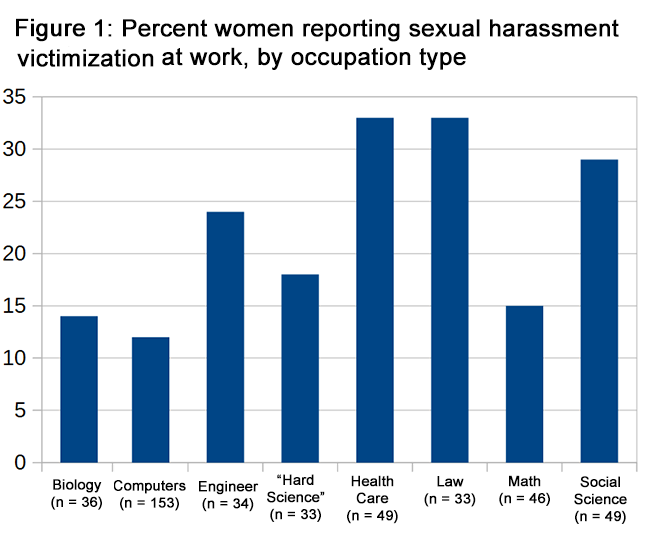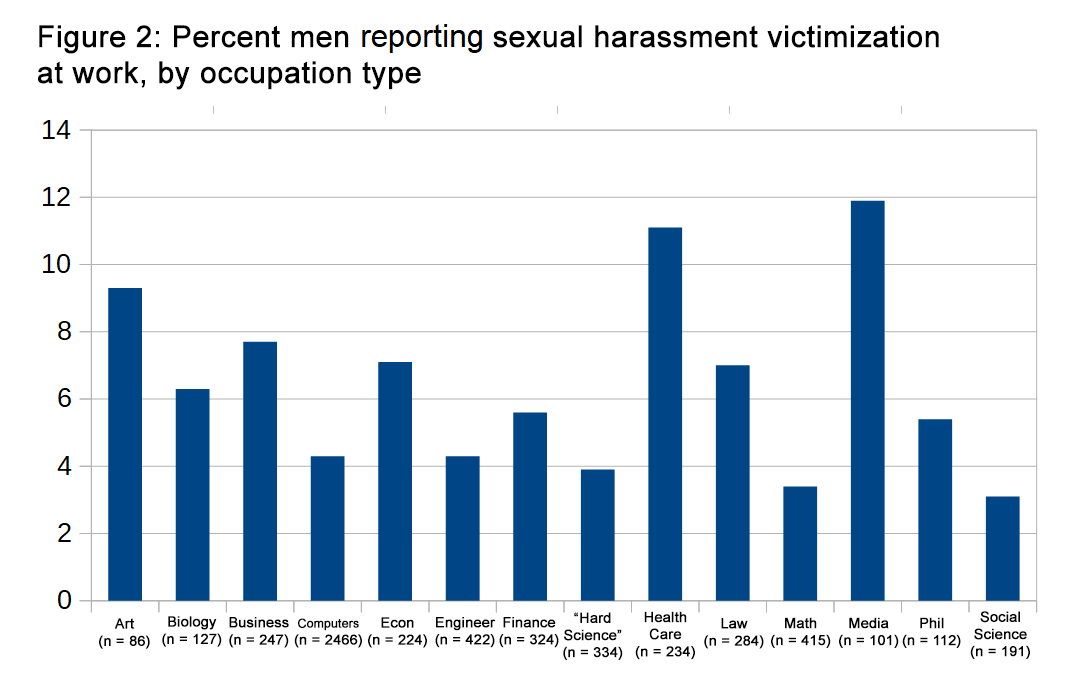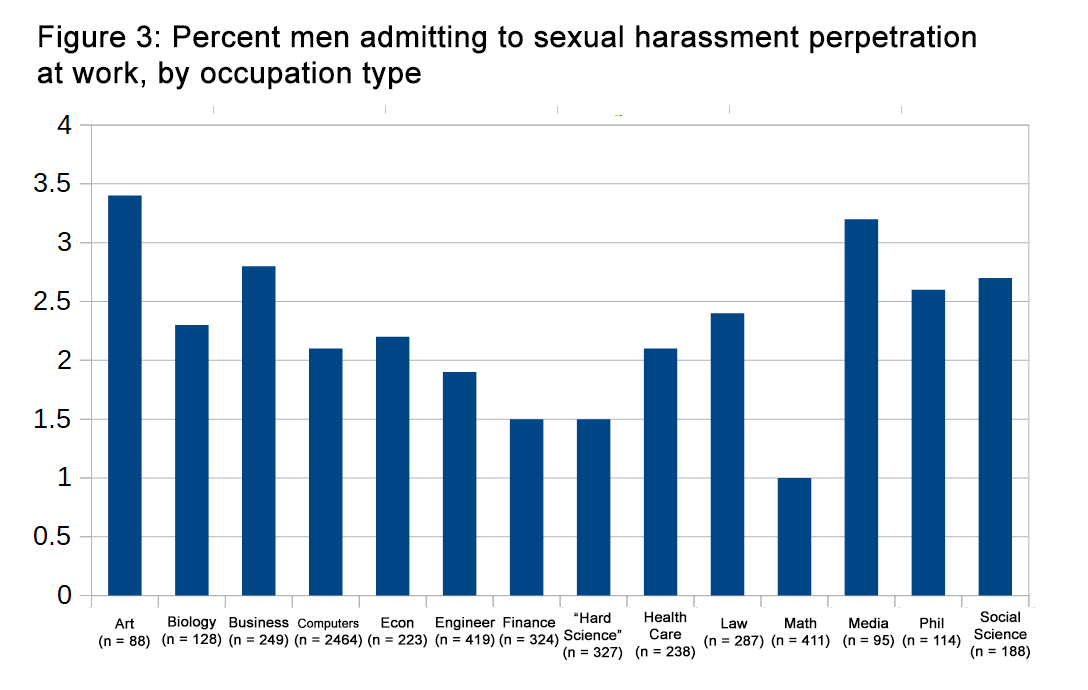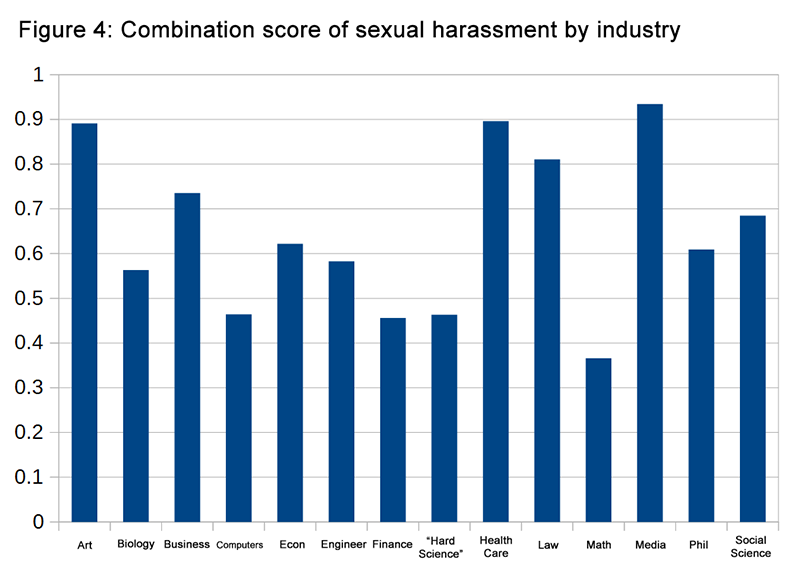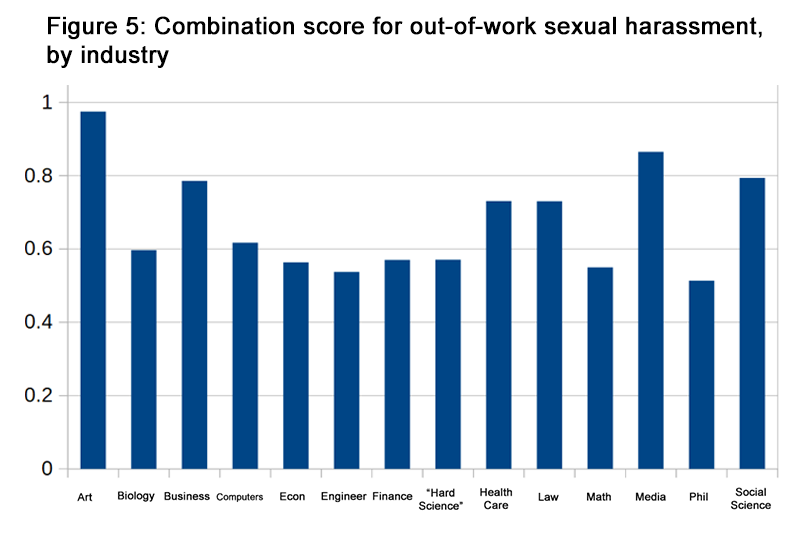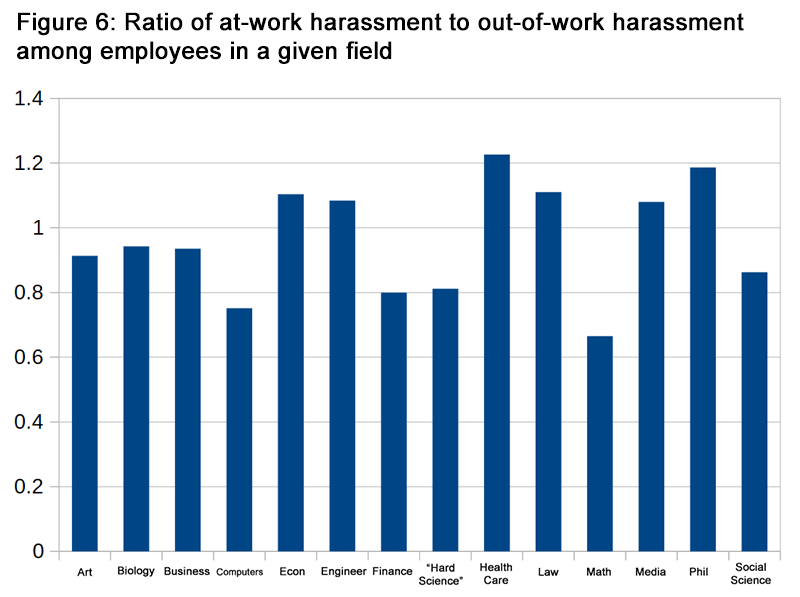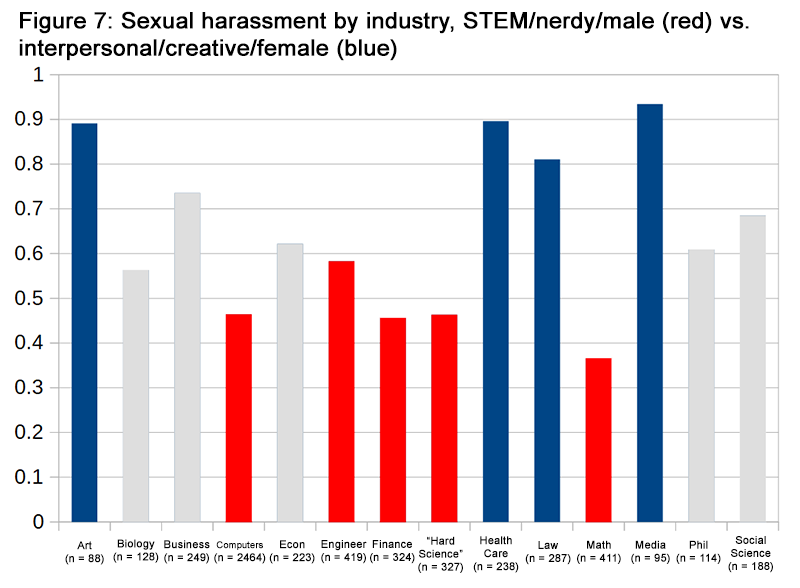I.
A spectre is haunting Europe. Several spectres, actually. One of them is the spectre of communism. The others are literal ghosts. They live in abandoned mansions. Sometimes they wail eerily or make floorboards creak. If you arrange things just right, you might be able to capture them on film.
Or at least this must have been the position of the founders of the Fabian Society, Britain’s most influential socialist organization. In 1883, ghost hunters Frank Podmore and Edward Pease spent the night at the same West London haunted house, looking for signs of the paranormal. As the night dragged on without any otherworldly visitations, they passed the time in conversation and realized they shared an interest in communist thought. The two agreed to meet up again later, and from these humble beginnings came one of the most important private societies in the history of the world.
Before the Fabians, communism was a pastime of wild-eyed labor activists promising bloody revolution. The Society helped introduce the idea of incremental democratic socialism – not just in the sense of Bernie Sanders, but in the sense of the entire modern welfare state. In the process, they pretty much invented the demographic of champagne-sipping socialist intellectuals. Famous Society members included George Bernard Shaw, Muhammed Ali Jinnah, Jawaharlal Nehru, and Tony Blair; Fabian ideas were imported wholesale into the economic policies guiding newly-independent India, Nigeria, Egypt, Syria, among others.
I became interested in the Fabians after reading Kerry Vaughn’s excellent essay on the early neoliberal movement. I’m tempted to say “on the early neoliberal conspiracy”, choosing that not because any of what they did was secret – it wasn’t – but because it seems like the only term that describes their efficiency. A small group of people who wanted to change the world founded an organization, garnered influence in a bunch of little ways, thought strategically and acted with discipline. And after decades of work they got into positions of power and successfully changed the world, shifting the economic consensus from state socialism to free(er) markets.
And the Fabians seem like the same story, told in reverse. A small group of idealists, thinking strategically and acting with discipline, moved democratic socialism from the lunatic fringe to the halls of intellectual power. If aspiring generals study Alexander the Great and Napoleon, surely aspiring intellectual movements should study the neoliberals and the Fabians. Kerry’s essay on neoliberalism was great, but I really wanted to know how the Fabians progressed from failed ghost hunters to puppetmasters controlling half of the twentieth century.
Edward Pease’s The History Of The Fabian Society (Amazon, Project Gutenberg) seemed like a promising starting point, since it was written by one of the Society’s founders and top officials. Pease turns out to be an engaging writer with a good sense of humor. His book, however, is a bit puzzling. It paints a Fabian Society which is chronically disorganized and which kind of hilariously bumbles into global power despite itself. I am not sure how much this reflects reality and how much this reflects Edward Pease’s personal external locus of control and/or weird theory of history – but if you want a story about sinister socialist conspirators using their genius to upend the existing order, this isn’t really it.
Still, it was informative, funny, and not totally absent of practical applications, so below I include some discussion and interesting passages.
II.
After the original ghost hunt, Pease and Podmore met again in a few other situations and eventually got some people together to found The Fellowship Of New Life, agreeing:
That an association be formed whose ultimate aim shall be the reconstruction of Society in accordance with the highest moral possibilities
Later fleshed out as:
OBJECT: The cultivation of a perfect character in each and all.
PRINCIPLE: The subordination of material things to spiritual
FELLOWSHIP: The sole and essential condition of fellowship shall be a single-minded, sincere, and strenuous devotion to the object and principle.
Under these auspices, they gathered a collection of upper-middle-class bureaucrats whose names sounded kind of like C.S. Lewis villains, like Hubert Bland and Percival Chubb, who agreed to meet monthly and discuss how to achieve their goals. Soon the political discussions started to crowd out the more philosophical ones, and so the politically-minded Fellows branched off to form their own society. Since they believed that Communists should avoid talk of violent revolution and instead bide their time working within the system, they named themselves the Fabian Society after Roman general Quintus Fabius Maximus, famous for his delaying tactics. According to one of their pamphlets:
For the right moment you must wait, as Fabius did most patiently, when warring against Hannibal, though many censured his delays; but when the time comes you must strike hard, as Fabius did.
(Pease adds that “It has been pointed out by Mr. H.G. Wells, and by others before him, that Fabius never did strike hard”)
They gradually settled into a routine. Every fortnight, the Society would sponsor a lecture, sometimes by a member, sometimes by a guest, on some aspect of communism. Afterwards there would discussion and socializing (the type where you make friends, not the type where you nationalize industries). Pease notes that not only did this educate people, but the existence of a fortnightly activity kept people connected to the movement and the other members, and made them more likely to stick around and get engaged in other ways.
Sometimes the lectures would include or be replaced by debates among members on aspects of communist thought or policy. Once again, the apparent primary objective of learning ended up being overshadowed by a secondary benefit: all of the Fabians became excellent debaters. This became very important when the organization began fielding candidates for local government. According to George Bernard Shaw, “It was in that way that Bradlaugh, for instance, graduated from being a boy evangelist to being one of the most formidable debaters in the House of Commons. And the only opponents who have ever held their own against the Fabians in debate have been men like Mr. Levy or Mr. Foote, who learnt in the same school.”
When a lecture was particularly successful, the Fabians would turn it into a traveling tour. During this period British intellectual life was pretty centered in London, and when that city’s intellectual stars would go give lectures in Manchester or Liverpool, they could fill theaters. Pease describes one trip in 1890, where a half-dozen or so prominent Fabians went on a tour of North Britain:
The lectures, except for a few days during the contest at Eccles, were extremely well reported, and even the ‘Manchester Guardian’ (the ‘Daily News’ of the manufacturing districts) came out with an approving leader. The audiences throughout the campaign steadily increased and followed the lectures with close and intelligent attention. In particular the members of Liberal working men’s clubs constantly declared that they had never heard ‘the thing put so straight’ before, and complained that the ordinary party lecturers were afraid or unwilling to speak out. Men who frankly confessed that they had hesitated before voting for the admission of our lecturers to their clubs were enthusiastic in welcoming our message as soon as they heard it. The vigorous propaganda in the manufacturing districts of the S.D.F. branches has been chiefly carried on by means of outdoor meetings. Its effect upon working-class opinion, especially among unskilled labourers, has been marked and important, but it has entirely failed to reach the working-men politicians who form the rank and file of the Liberal Associations and Clubs, or the ‘well-dressed’ Liberals who vaguely desire social reform, but have been encouraged by their leaders to avoid all exact thought on the subject.”
But by far the most important activity of the Fabians were their pamphlets. They got into this almost by accident. Pease says the first pamphlet was written by W.L. Phillips, whom he frankly describes as “a house-painter, the only genuine working man in our ranks”. The Fabians liked it and agreed to finance 2,000 copies. It discussed who the Fabians were, why they thought capitalism was bad, and how socialism was going to be better. Pease describes it as asserting that “we had with considerable courage set out to reconstruct society, and we frankly confessed that we did not know how to go about it.” The message was not a hit.
This was when the Society experienced its great stroke of luck. Three of the greatest writers and intellectuals of the era joined the movement: George Bernard Shaw in September 1884, Annie Besant in April 1885, and Sidney Webb that May.
Shaw was one of history’s most famous authors and playwrights. He was charismatic, shockingly prolific, and also had a talent for organizing things and getting people to agree with him.
Besant was described by Pease as “then notorious as an advocate of Atheism and Malthusianism, [and] the heroine of several famous law cases” – by which he was referring to attempts to censor her for writing about birth control, feminism, and other topics. She was well-known and beloved by the lower classes, and a fiery speaker who was good at riling up an auditorium.
Webb was a sort of 19th-century Ezra Klein, taking advantage of the first stirrings of statistics as a science to make himself an authoritative-sounding wonk. He was also an amazing writer, though more in the sense of viral popularizations of facts and explanations than in the Shaw sense of revolutionizing literature.
It wouldn’t quite be right to say the Society took advantage of these people’s talents; it might be more accurate to say nobody could stop them. Shaw, especially, sort of waltzed into the Society, took it over by force of personality and obviously being better than anyone else, and started churning out pamphlets as fast as everyone could print them. They, and four lesser lights who also helped with the pamphlet writing, became known as the seven Fabian Essayists. With their skills, the Fabian Pamphlets started catching on – to the point where, by 1891, a hundred thousand copies had been distributed and they more or less shaped the man in the street’s concept of socialism.
Webb’s work in particular helped give the Fabian Society an extra role – that of the modern think tank. Under his lead, quantitatively-minded Fabians queried various government records departments to try to collect and publicize numbers that would be useful in making the case for socialism – facts about how much of the wealth capitalists were keeping to themselves, how many poor people there were, what their conditions were like. Pease says that “The statistical facts were at that time practically unknown. They had to be dug out, one by one, from obscure and often unpublished sources” and so “at this period the Society had a virtual monopoly in the production of political pamphlets in which facts and figures were marshalled in support of propositions of reform in the direction of Socialism.”
By 1900, all of these projects were big successes, and the Society began to consider expansion. They encouraged the creation of branch societies in different towns and countries, and student societies in various universities. Pease was generally unimpressed with how these worked out. He felt experience had proven most of the people based outside London to be intellectually second-rate and without much to contribute. As for student societies, there was so much churn as students came and left after four years that he didn’t think anything useful ever happened there.
He was a little more optimistic about some other projects, including a lending library for socialist books, an office that gave legal advice to workers or other people having socialism-related legal disputes, and an effort to found a university studying items of interest to Fabians (which became the London School of Economics). And above all, he was impressed with the Fabians’ project to intervene in local politics. Although the Society was too small to field national-level candidates, it did impressive work filling up school boards, minor bureaucracies, and sub-city-level local councils with Fabian socialists. This wasn’t just an issue of campaigning. It was an issue of talent development. Some well-spoken well-educated person would go to the local Fabian meeting in North Whatevershire, and get noticed, and some veteran would approach him and say that North Whatevershire had an unusually reactionary or vulnerable council, and had he ever considered himself for the seat? And he would say of course not, what, me a politician, that’s crazy. And the veteran would encourage him, and walk him through the process of registering for an election, and give him advice on the minimal amount of campaigning necessary at this level, and then a few months later he’d be a councillor. Again, the Fabians did this partly because they cared what happened on tiny villages’ school boards, but also partly because the school board members of today are the people running for higher offices tomorrow, and if you can get someone’s foot in the door and get them to start learning the ropes of politics, you’re in a really good place.
There were a few other things. Occasionally they would hold conferences. Sometimes they would meet up with socialists from other countries or parties and try to sign accords. They had various worthy intellectual projects, including putting out lists of what books people should read to learn about socialism, or donating socialism-related books to the local library. But these were always a small part of their work. The core of the Fabian strategy was lectures, debates, talent cultivation, and – above all – really well-written pamphlets.
III.
Why was the Fabian Society so successful?
By “so successful”, I mean that the Fabians’ manifesto basically reads like a description of the average modern democracy’s public policies. A set of Fabian demands called the True Radical Programme included an 8-hour workday, women’s suffrage, paying MPs a salary, capital gains tax, public education, school lunches, and railroad nationalization. Keep in mind that they called it the True Radical Programme because it was supposed to be more radical than various other groups’ Radical Programmes. They considered these totally insane fringe demands. And they got them all.
We can debate how important the Fabian Society was in this. Certainly they seem to have picked a winning horse, been on the right side of history, et cetera. But people at the time thought the Fabian Society was important. It became famous (or infamous, depending on your political leaning) and heavily associated with exactly these sorts of topics. If at least a small portion of their success can be attributed to them, how?
Pease makes it very clear he doesn’t think it was because they were especially competent or hard-working. The Society had a hands-off supply to getting new members; if you wanted to be a member, you could apply, and get a sponsor, and eventually someone would probably vote on your membership – but there weren’t recruitment drives or anything. They were equally clueless about money; whenever they had any, it was usually because it fell into their laps by coincidence, usually random rich people giving them donations. Pease, who doesn’t seem to find money very interesting, never mentions whether the Society charges dues or not; if it did, they seem to have been minimal. In 1886, he lists the Society’s total annual budget as £35, which I think corresponds to about £3500 today. Through much of the Society’s history, its meetings took place in members’ houses or in whatever random places people could get for cheap. There was constant discussion of “maybe if we made an effort to get more money we could promote socialism more effectively”, but nobody seems to have ever done anything about it. It wasn’t an ideological issue – nobody was refusing to participate in the degenerate capitalist system or anything. They just don’t seem to have been very good at doing things. Someone would mention raising more money, they would form a committee to look into the issue, and the committee would get bored and wander off.
Even when the Fabians managed to throw something together, it always had a sort of doddering-eccentric-British-gentry air about it, like nobody was really that concerned with whether or not it accomplished anything. Pease describes the Fabians’ first big convention, where experts were invited to lecture the delegates on the issues of the day: “The most successful paper was by a strange gentleman whom we had taken on trust as a Socialist, but who turned out to be an enthusiast on the subject of building more harbors.”
The Society’s members tended to be strange people, mercurial and hard to keep on task. Occasionally they would get distracted and forget about communism entirely, running off to worry about art or philosophy or ghost-hunting or something. One of the group’s most influential leaders, Annie Besant, dropped out almost overnight to join a cult, move to India, study ESP, adopt a young child whom she claimed was the Messiah, and after many complicated twists of fate become President of the Indian National Congress. This kind of thing was always happening to the Fabians, and it really got in the way of the cause.
So why was the Fabian society so successful? Pease identifies several factors.
First, it was (arguably) the first Socialist organization in Britain. Pease thinks this is important not just because it got first mover advantage, but because it didn’t have to justify itself to anyone:
The Fabian Society has never had to seek acceptance by the rest of the Socialist movement. At any later date it would have been impossible for a relatively small middle-class society to obtain recognition as an acknowledged member of the Socialist confraternity. We were thus in a position to welcome the formation of working-class Socialist societies, but it is certain that in the early days they would never have welcomed us.
Second, it lucked into getting a couple of bona fide geniuses:
The second and chief reason for the success of the Society was its good fortune in attaching to its service a group of young men, then altogether unknown, whose reputation has gradually spread, in two or three cases, all over the world, and who have always been in the main identified with Fabianism. Very rarely in the history of voluntary organisations has a group of such exceptional people come together almost accidentally and worked unitedly together for so many years for the furtherance of the principles in which they believed. Others have assisted according to their abilities and opportunities, but to the Fabian Essayists belongs the credit of creating the Fabian Society…It was this exceptional group of leaders, all intimate friends, all loyal to each other, and to the cause they were associated to advocate, and all far above the average in vigour and ability, that in a few years turned an obscure drawing-room society into a factor in national politics.
Third, the Fabians were bourgeois in every sense of the word. They knew how to move around in bourgeois society and get it to work for them. Pease talks about how (for him) one of the highlights of the Fabian Conference was how well-designed the stationery was:
It also, by the way, showed off our pretty prospectus with the design by Crane at the top, our stylish-looking blood-red invitation cards, and the other little smartnesses on which we then prided ourselves. We used to be plentifully sneered at as fops and arm-chair Socialists for our attention to these details; but I think it was by no means the least of our merits that we always, as far as our means permitted, tried to make our printed documents as handsome as possible, and did our best to destroy the association between revolutionary literature and slovenly printing on paper that is nasty without being cheap. One effect of this was that we were supposed to be much richer than we really were, because we generally got better value and a finer show for our money than the other Socialist societies.
I used to be upset when charitable and activist organization would have really nice offices with lots of art on the wall, call in expensive catered lunches to their events, and hire a bunch of graphics design and PR people to make everything look perfect. Wasn’t this excessive? Shouldn’t they be spending their money and energy on the cause? Pease argues no. There were hordes of unwashed socialists standing on soapboxes raving about Revolution. The Fabians’ comparative advantage was looking respectable. For a cause like socialism, where an important part of the battle is moving it into the Overton Window, handing out really well-designed stationery was important activism in and of itself.
Fourth, the Fabians accepted their role as the Socialist Society For Middle Class People as a valuable part of the overall socialist ecosystem. They refused to condemn themselves as exclusionary, or worry they were too bourgeois to have a right to speak, or feel guilty for not having better representation of poor people. They seemed to be working from a model where middle-class and working-class people had different mores and interests, and combining both of them into one society would just make everybody angry and unhappy. Pease explicitly understood that the working class societies had things they were better at and should focus on (like mass politics and riling up the base) and the Fabian Society had other things it was better at and should focus on (like think-tank-style white papers on the benefits of socialism). He also explicitly understood that an important part of having a socialist society was the social aspect – come for the politics, come back because you like the company or you’re looking for someone to date or whatever. At this point there wasn’t much social mixing of British classes, and there wasn’t really a script for having a group that was half upper-middle-class and half workmen. Because the Fabians got so many of their advantages from being bourgeois, they wanted to protect that status at all costs.
Regret has been sometimes expressed, chiefly by foreign observers, that the Society has maintained its separate identity. Why, it has been asked, did not the middle-class leaders of the Society devote their abilities directly to aiding the popular organisations, instead of “keeping themselves to themselves” like ultra-respectable suburbans?
If this had been possible I am convinced that the loss would have exceeded the gain…the Fabians were not suited either by ability, temperament, or conditions to be leaders of a popular revolutionary party. Mrs. Besant with her gift of splendid oratory and her long experience of agitation was an exception, but her connection with the movement lasted no more than five years. Of the others Shaw did not and does not now possess that unquestioning faith in recognised principles which is the stock-in-trade of political leadership: and whilst Webb might have been a first-class minister at the head of a department, his abilities would have been wasted as a leader in a minority. But there was a more practical bar. The Fabians were mostly civil servants or clerks in private employ. The methods of agitation congenial to them were compatible with their occupations: those of the Social Democrats were not. Indeed in those days no question of amalgamation was ever mooted.
Fifth, the Fabians protected a sort of middle-class-liberal atmosphere of intellectual freedom and what Pease referred to as an inability to take themselves seriously – not in the sense of not being committed, but in the sense where they would laugh at anyone who seemed too pompous or too certain of anything. Pease seems to have thought that the lower classes’ lack of a liberal education and likely religious upbringing made them susceptible to a dogmatic orthodox Marxism marked by witch-hunts to weed out revisionists. Most British intellectuals wouldn’t have been willing to put up with such a climate, and so wouldn’t have been able to get into socialism. The Fabian Society provided an alternative space where the sort of open debate that intellectuals and middle-class people take for granted was available and encouraged:
The Social Democrats of those days asserted that unquestioning belief in every dogma attributed to Marx was essential to social salvation, and that its only way was revolution, by which they meant, not the complete transformation of society, but its transformation by means of rifles and barricades; they were convinced that a successful repetition of the Commune of Paris was the only method by which their policy could prevail. The Fabians realised from the first that no such revolution was likely to take place, and that constant talk about it was the worst possible way to commend Socialism to the British working class. And indeed a few years later it was necessary to establish a new working-class Socialist Society, the Independent Labour Party, in order to get clear both of the tradition of revolutionary violence and of the vain repetition of Marxian formulas. If the smaller society had merged itself in the popular movement, its criticism, necessary, as it proved to be, to the success of Socialism in England, would have been voted down, and its critics either silenced or expelled.
Also:
The case for this project was based, strange to say, not on any history but on the Marxian analysis of the origin of the value of commodities, and no man who did not understand this analysis, or pretend to understand it, was fit to be called a “comrade.” The economic reasoning which “proved” this “law” was expressed in obscure and technical language peculiar to the propagandists of the movement, and every page of Socialist writings was studded with the then strange words “proletariat” and “bourgeoisie.”
Lastly, the whole world, outside the socialist movement, was regarded as in a conspiracy of repression. Liberals (all capitalists), Tories (all landlords), the Churches (all hypocrites), the rich (all idlers), and the organised workers (all sycophants) were treated as if they fully understood and admitted the claims of the Socialists, and were determined for their own selfish ends to reject them at all costs. Although the Fabian propaganda had no doubt had some effect, especially amongst the working-class Radicals of London, and although some of the Socialist writers and speakers, such as William Morris, did not at all times present to the public the picture of Socialism just outlined, it will not be denied by anybody whose recollections reach back to this period that Socialism up to 1890 was generally regarded as insurrectionary, dogmatic, Utopian, and almost incomprehensible.
“Fabian Essays” presented the case for Socialism in plain language which everybody could understand. It based Socialism, not on the speculations of a German philosopher, but on the obvious evolution of society as we see it around us. It accepted economic science as taught by the accredited British professors; it built up the edifice of Socialism on the foundations of our existing political and social institutions: it proved that Socialism was but the next step in the development of society, rendered inevitable by the changes which followed from the industrial revolution of the eighteenth century. It is interesting after twenty-five years to re-read these essays and to observe how far the ideas that inspired them are still valid, and how far the prophecies made have been fulfilled.
Sixth, the Fabians tried to be a “big tent”. Aside from having room from people who weren’t orthodox Marxists, they generally avoided purges and purity tests. This wasn’t always easy for them. Just as they were reaching the big time, Britain got involved in the Boer War. Some of the Fabians were patriots who wanted to support the British cause; others thought the British government was evil and reflexively sided with its enemies, and a few even had various principles, some of which sound really weird to modern ears, for example this supposedly-socialist opinion:
As for South Africa, “however ignorantly [our] politicians may argue about it, reviling one another from the one side as brigands, and defending themselves from the other with quibbles about waste-paper treaties and childish slanders against a brave enemy, the fact remains that a Great Power, consciously or unconsciously, must govern in the interests of civilisation as a whole; and it is not to those interests that such mighty forces as gold-fields, and the formidable armaments that can be built upon them, should be wielded irresponsibly by small communities of frontiersmen. Theoretically they should be internationalised, not British-Imperialised; but until the Federation of the World becomes an accomplished fact we must accept the most responsible Imperial federations available as a substitute for it”
All of this threatened to tear the Society apart, with various parties demanding that people be expelled for supporting the war or for opposing it. Against this, the veterans of the Society, including Pease, Webb, and Bernard Shaw, insisted upon the policy that anyone who mouthed agreement with the Principles of the Society – a short document containing only the broadest possible statements about socialism – was a member in good standing. When they finally got a resolution passed officially declaring that the Fabians had no position on the Boer War, Pease described it as “saving the Society”. The same happened during World War I and even various peacetime elections, usually with Labour supporters trying to make Labour membership a condition of Fabian membership. All such resolutions were quashed mercilessly by the Fabian leaders except one – the entire female membership of the Society threatened to walk en masse unless the Society enforced conformity with belief in women’s suffrage. The leadership grudgingly agreed.
Seventh, the Fabians’ namesake long-term outlook gave them an important role in cultivating talent, and some of the norms and assumptions of their organization seemed to work well for this. Pease says several times that “Socialists are born, not made”. He didn’t expect forceful action – recruitment campaigns, branch organizations, or the like – to have any effect. Instead, he favored a soft touch. Have the sort of intellectual atmosphere that talented people would be attracted to. Gradually draw them in with interesting social and intellectual activities. Once they’re attached, get them in on the first rung of some ladder or other – local politics, informal debate, small-time pamphlet writing. Have a few geniuses around who can recognize other geniuses. Then have positions to put people in once they’re worthy of it – whether it’s the lecture circuit, the propaganda business, or a university for them to teach at.
The value of the plan for a propagandist society is largely this, that experience shows that people can only work together efficiently when they know each other. Therefore in practice political and many other organisations find it necessary to arrange garden parties, fêtes, picnics, teas, and functions of all sorts in order to bring together their numbers under such conditions as enable them to become personally acquainted with each other. In times of expansion the Fabian Society has held dinners and soirées in London, many of which have been successful and even brilliant occasions, because the new members come in crowds and the old attend as a duty. When new members are few these entertainments cease, for nothing is so dreary as a social function that is half failure, and a hint of it brings the series to an end. But a Summer School where members pass weeks together is far more valuable in enabling the leaders and officials to find out who there is who is good as a speaker or thinker, or who is a specialist on some subject of value to the movement. Moreover, gatherings of this class attract those on the fringe of the movement, and many of our members have come to us through attendance at the school. Apart from the direct interests of the Society, a School of this character is valued by many solitary people, solitary both socially, such as teachers and civil servants, who are often lonely in the world, and solitary intellectually because they live in remote places where people of their way of thinking are scarce.
It’s hard to say how many of these points were responsible for Fabian success, and how many were just random policies that didn’t change anything. But it doesn’t look like many of them were secrets of success. Most of these seem to have been widely adopted by the best modern nonprofits. I don’t know to what degree the Fabians originated these strategies, or whether they’re just natural optima that many successful organizations tend to converge on.
IV.
To finish, I do want to focus on the historical-inevitability angle. Whatever the Fabians’ other advantages, they arose at a really good time to be a socialist thinker. There was a sort of feeling in the air that socialism was the wave of the future, that there were literally no good arguments whatsoever against it, that you were either an intellectual (in which case it was obvious that socialism was better) or you were just so thoughtless that you had never even considered the matter at all (in which case you were motivated by things like prejudice or desire to hold on to your ill-gotten wealth). Pease describes the overwhelming consensus:
Socialism succeeds because it is common sense. The anarchy of individual production is already an anachronism. The control of the community over itself extends every day. We demand order, method, regularity, design; the accidents of sickness and misfortune, of old age and bereavement, must be prevented if possible, and if not, mitigated. Of this principle the public is already convinced: it is merely a question of working out the details. But order and forethought is wanted for industry as well as for human life. Competition is bad, and in most respects private monopoly is worse. No one now seriously defends the system of rival traders with their crowds of commercial travellers: of rival tradesmen with their innumerable deliveries in each street; and yet no one advocates the capitalist alternative, the great trust, often concealed and insidious, which monopolises oil or tobacco or diamonds, and makes huge profits for a fortunate; few out of the helplessness of the unorganised consumers.
This is a really blunt way to put it. Do we want society to be total chaos? Or do we want to organize it and figure out how to make it run better? The latter? Okay, you’re a socialist.
The Fabians loved debating, so you would think at some point they would debate capitalists. But Pease seems far from convinced that capitalists had any arguments, or were even the sort of people who could debate. Although he is familiar with the great economists – Adam Smith, John Stuart Mill, David Ricardo – he thinks of them as proto-Socialists or at least neutral, and is fond of quoting an apparently pro-Communist passage from Mill’s “Political Economy”:
If the choice were to be made between Communism with all its chances, and the present state of society with all its sufferings and injustices, if the institution of private property necessarily carried with it as a consequence that the produce of labour should be apportioned as we now see it almost in inverse proportion to labour, the largest portions to those who have never worked at all, the next largest to those whose work is almost nominal, and so in descending scale, the remuneration dwindling as the work grows harder and more disagreeable until the most fatiguing and exhausting bodily labour cannot count with certainty on being able to earn even the necessities of life; if this or Communism were the alternative, all the difficulties, great or small, of Communism would be but as dust in the balance.
I’m not sure whether Pease believed that a capitalist intellectual was a contradiction in terms, but he certainly didn’t expect to meet any or think they had anything interesting to say. Indeed, the one time he does bring up some people having arguments against socialism, they sound bizarre and totally unlike anything a modern person might possibly say:
When the Society was formed the Malthusian hypothesis held the field unchallenged and the stock argument against Socialism was that it would lead to universal misery by removing the beneficent checks on the growth of the population, imposed by starvation and disease upon the lowest stratum and society.
I don’t know if this was an echo chamber effect or if this was just how the late 19th century worked. I think the latter is at least possible. Remember, everyone (including the capitalists) expected communist countries to have stronger economies, even as late as the 1950s. The idea of coordination problems was almost unknown; the concept of prices as useful signals was still in its infancy. And the possibility that communism could lead to totalitarianism was almost inconceivable; for Pease these concepts are basically exact opposites, and it took Orwell to even jam the concept of “totalitarianism” in the public consciousness in a useful way. If you don’t have any of those concepts or ideas, how do you argue against socialism? I don’t know if anyone in Pease’s day had really solved that problem.
Not only were there no good arguments for capitalism, but the arguments for socialism were much more convincing. The standard communist rhetoric talks about capitalists paying for a factory, workers working in the factory, and capitalists getting most of the money despite putting in none of the work. This rings kind of hollow nowadays. Modern communists rail against Elon Musk – but everyone knows Elon Musk is brilliant and works 80+ hour weeks. You can be upset that lower-level SpaceX employees don’t get paid enough, but “why does Elon Musk deserve to get any money?” is a question with a bunch of really obvious answers. Venture capitalists are generally smart people who founded their venture capitalist firms and make inspired guesses as to where to direct resources. And it’s hard to create a broad coalition against stockholders from people who may themselves have some money in stocks for retirement. You can make arguments for why all these people deserve less than they get – but they don’t hit home the way they must have in Pease’s day.
In Pease’s day, the Marxist model fit like a glove. Some businessman would go to some lord with an ancestral pension of thousands of pounds and ask for money to set up a factory. The lord (or more likely his steward) would sign off on it, the factory would be built, a little of the money would go to the businessman, but most of it would go back to the lord who was living on a country estate hunting foxes somewhere. Whatever you think of our current system, the system in Pease’s day wore its inequality on its sleeve in a way ours doesn’t. And the slogans of the Fabian Society and of its working-class comrades were things like “No money without work!” and “Put the rich to work!” – very compelling but less applicable to Elon Musk, Bill Gates, or most of the modern crop of capitalist figureheads. For Pease, “income inequality” would not really be a sensible term; it was kind of assumed that worrying about the differences between high-income people and low-income people was a distraction toward them uniting against their real enemy: people who didn’t work at all but had all the money anyway.
All of this came together into a feeling that socialism was so self-evident that arguing for capitalism was absurd. This led to a perspective where there was a battle between the right and rational way of organizing society (socialism) versus the entrenched forces who wanted to keep power but admitted they had no justification besides force and self-interest. Modern communism’s descent from its 19th century predecessors explains a lot about its mindset.
And so the Fabians, despite their nominal commitment to waiting, were supremely sure that victory was near:
When the Liberal Party was crushed at the election of 1895 we thought that its end had come in England as it has in other countries. Conservatism is intelligible: Socialism we regarded as entirely reasonable. Between the two there seemed to be no logical resting place. We had discovered long ago that the working classes were not going to rush into Socialism, but they appeared to be and were in fact growing up to it. The Liberalism of the decade 1895-1905 had measures in its programme, such as Irish Home Rule, but it had no policy, and it seemed incredible then, as it seems astonishing now, that a party with so little to offer could sweep the country, as it was swept by the Liberals in 1906.
Tell me this doesn’t sound like a leftist journalist on Twitter talking about the Democrats while promising that the “progressive moment” is just around the corner. I notice the Fabian Society is still around and that their motto is “The future of the Left since 1884”. It sounds weird to me. Maybe a little too reminiscent of the claim that “fusion power is the future, and always will be”. The Fabians named themselves after a guy who was famous for his patience, but surely even they have to be getting a little bit tired.






